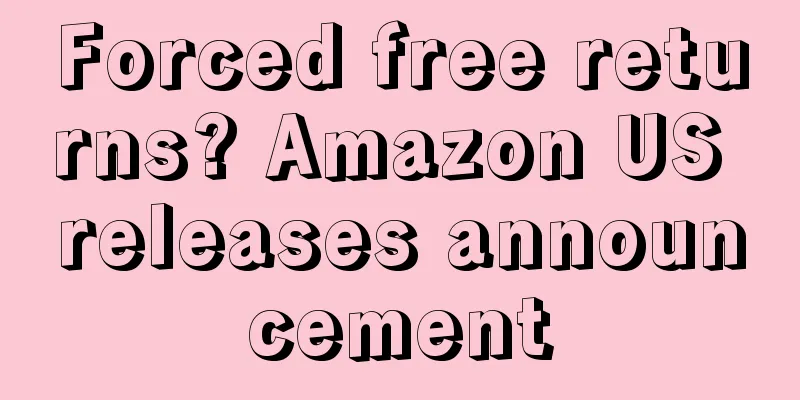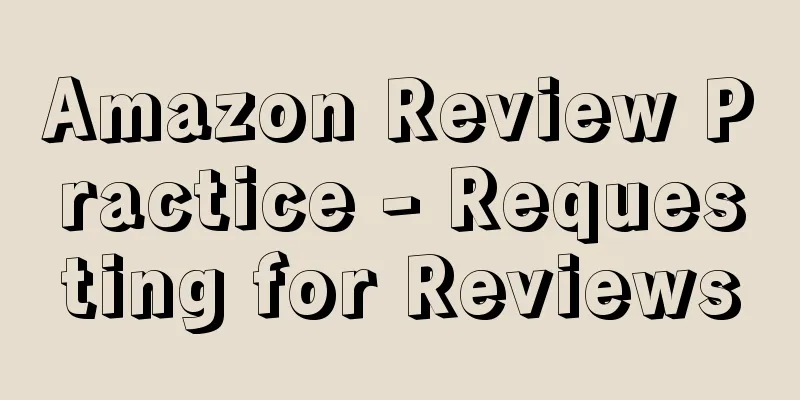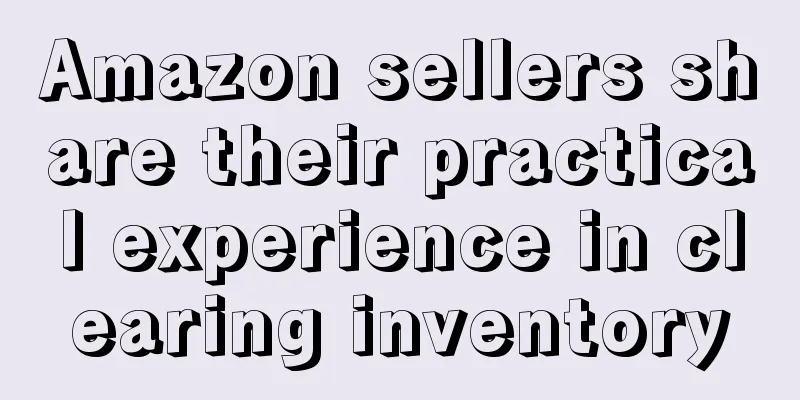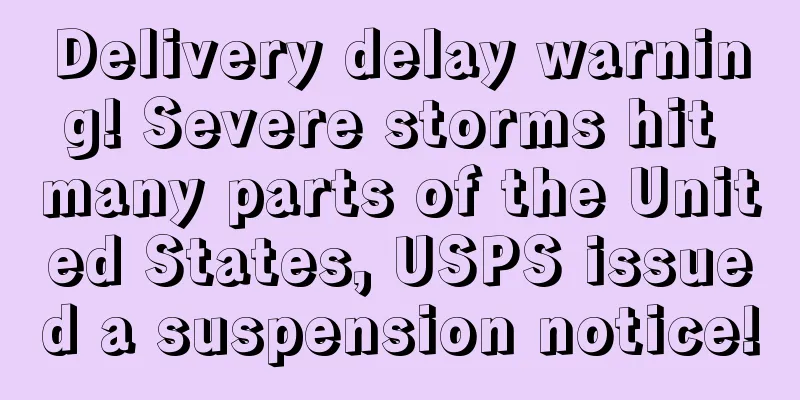A guide to getting reviews for new product listings on Amazon in 2019: How to successfully get the first review
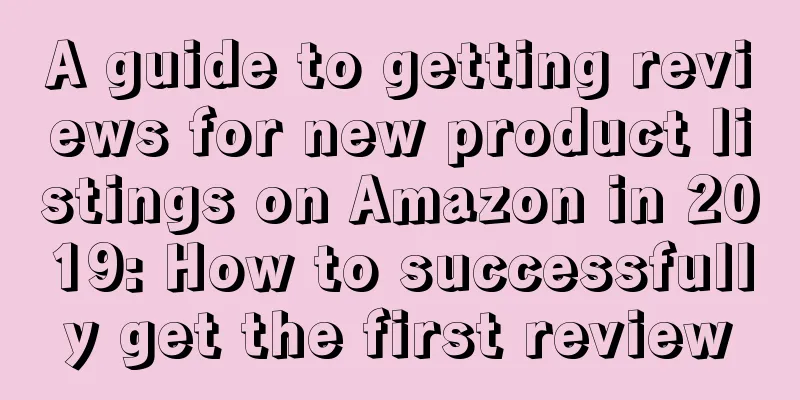
|
On Amazon, it is difficult to get reviews for some listings that have been created for a long time, let alone new product listings. Reviews have always been a pain point for Amazon. Product reviews have an important impact on buyers' shopping decisions. They are social proof of product quality and sellers' services. At the same time, many sellers fake orders and interfere with buyers' reviews, resulting in many fake reviews on the platform, which is a headache for Amazon. Amazon has updated its policies several times over the past few years to combat fake reviews. While this makes it harder for sellers to manipulate customer reviews, it also raises barriers to new products entering the market:
So what can sellers do? This article will tell sellers some methods and problems of getting reviews for new products. Before you begin, you need to explain to sellers what you can and cannot do when requesting reviews to comply with Amazon policy:
Things you can do: Ask for reviews neutrally What not to do: Offer incentives in exchange for reviews Ask for a positive or five-star review Ask friends and family to write reviews for you Pay for reviews Other things that may violate Amazon policies not mentioned in this article so……
To get a review, the seller may have done the following: 1. Optimize your listing content Search results on Amazon are displayed based on the A9 algorithm. This algorithm ranks products based on relevance and probability of sale. The best way to improve organic rankings is to optimize your content. Including important keywords related to your product in your title, bullet points, and product description will not only help customers make purchasing decisions, but also improve your ranking. Higher rankings mean more exposure and potentially more sales. Finally, more sales will also lead to more reviews. Problem: While this is an effective long-term strategy, many sellers find that even if their listings are highly optimized, new products without any reviews have a hard time ranking high in search results. 2. Provide first-class customer service One way to get positive reviews is to keep your customers happy with great customer service. Even if a customer returns an item or complains, providing great customer service is likely to still earn you positive reviews. It’s also easier to just encourage customers you’ve spoken with before to leave a review. Problem: You can only provide great customer service to people who have already purchased your product. But if your product has no reviews and no rankings, then you may not have any sales. 3. Selling a really great product Selling a great product can encourage buyers to leave a review, but you have to remember that people tend to react to extremes. If the product is particularly bad, he will definitely take the time to leave a bad review and let others know his disappointment with you. If the product is particularly good, the buyer may want to share the excitement with others. Problem: You still need that first sale. 4. Amazon Early Reviewer Program Amazon knows that it’s hard to get the first few reviews for new products. So, it developed the Early Review Program. However, this program is only available to US brand registered sellers. Here’s how it works: For a fee of $60 (per SKU), Amazon will send follow-up emails to people who purchased your product and reward sellers $1 to $3 for writing a review. Only products with fewer than 5 reviews and cost more than $15 are eligible for the Early Reviewers Program. The program will end after one year or when your product receives 5 reviews. After a buyer leaves a review, your product will have an orange “Early Reviewer Rewards” badge. Problem: While this increases your chances of getting reviews, it doesn’t improve your search rankings. 5. Amazon Vine (only available to VC sellers) Amazon Vine is Amazon's own reviewer program. Reviewers who have a large number of reviews and are considered useful and trustworthy are invited to become "Vine Voices". Participants receive free products to test and provide honest reviews. The Amazon Vine program is currently only open to VC sellers. To participate in the program, suppliers must submit their products to Amazon and pay a fee of $2,500 to $7,500 per ASIN. Depending on the category, sellers can only provide a certain number of free products for evaluation. Problem: The price is too high and it’s only available to VC sellers. 6. Discount Codes This is still a common way to get early reviews. Sellers can offer buyers discount codes and by lowering the price they can incentivize more sales, which in turn can potentially get more reviews. Problem: Amazon now marks products purchased with discount codes as “unverified” and buyers may not trust such reviews as much, and Amazon also limits the number of such reviews. 7. Packaging Inserts Package inserts are promotional materials you can include in your packaging to solicit reviews. Be sure not to ask for positive reviews or offer incentives in return. Problem: You still need to get buyers to find your product first, and package inserts have very low conversion rates. 8. Email List Marketing This is a common strategy. Build an email list on Amazon and then send your target audience information about your new product along with a link to your Amazon listing. Problem: While this can be very effective, it takes a long time to build an email list large enough to generate a significant number of sales and reviews. 9. Facebook Bot Facebook Bot is the answer to almost all problems. Bot is an interactive Facebook ad that allows you to communicate with potential users. The ad appears in the newsfeed and encourages interaction. It asks questions or hides answers to questions to create an effect that makes potential users interested. A good product video can also be very effective. Once a user clicks on your ad, they immediately start interacting, just like chatting with a friend. Keep asking questions to make it fun and engaging. The goal is to provide additional value to your customers and hopefully get them to convert. Here’s an example mockup you could design for a new product using Facebook Bot: Setting up a Facebook Bot for your Amazon launch The secret is to drastically reduce the product price to generate your first sale and let the buyer know that the promotion is only for a short period of time. While you can’t directly ask for positive reviews, you can tell them that this is a new product and their honest feedback is important. Sellers can:
Also consider the following points:
Facebook Bot is a great way to actively engage with your user base. Facebook Bot ads are known to have a 90% open rate. Interactive messaging allows sellers and buyers to connect and communicate, encouraging first sales. After a purchase, you will be able to inspire reviews by providing additional value. Text✎ Fang Xiaoling/ Statement: When reprinting this article, the title and original text must not be modified, and the source and original link must be retained. |
<<: How does Shopify collect payments? How to set up Shopify payment methods
>>: How to find a niche market and maximize profits in 2019? 3 steps are enough!
Recommend
What is Lieyun.com? Lieyun.com Review
Lieyun.com was founded in 2013 and is a leading te...
What is WishPost Smart Selection? WishPost Smart Selection Review
The "WishPost Smart Selection" project (...
Exposed! The "inside story of how to get rich" by quickly becoming a top seller in three months
Compared with the past era of "picking up mon...
Americans tighten their belts for the holiday season? Daily necessities become the dark horse category
<span data-docs-delta="[[20,"美国人勒紧裤腰带过假期销售...
Amazon Black Friday starts today, why is the response from sellers so mediocre?
After publishing the article "2 days left for...
Important! Amazon's recent new features + Apollo control ACoS system
text Brand owners can now view search query perfor...
Why do more and more people want to do Amazon in 2020! ?
2020 Another year of Amazon's global sales Ama...
What is cross-border logistics? Cross-border logistics review
Cross -border logistics refers to the planning, im...
What is Yandex.Market? Yandex.Market Review
Yandex.Market is a price comparison shopping websi...
What is Jiuyi ERP? Jiuyi ERP Review
Beijing Jiuyi Network Technology Co., Ltd. is head...
Foreign media exposed Amazon's black technology! The platform will crack down on this operation
Although many of the black technology methods use...
Amazon's super plug-in! AI tools help with graphics and continue to make big sales! !
text With AI being so popular and Deepseek being ...
Useful tips! White hat methods to get high probability of winning Amazon flash sales!
Amazon’s on-site flash sales are a powerful tool f...
What is Boshen Intellectual Property? Boshen Intellectual Property Review
Guangzhou Boyi Management Consulting Co., Ltd. is ...
Exposed! Using fraudulent information to open a store and then reselling it for 30,000! The ultimate profiteering in the service provider industry...
With the development of time, the cross-border e-c...

